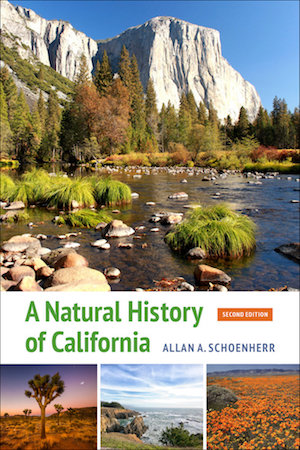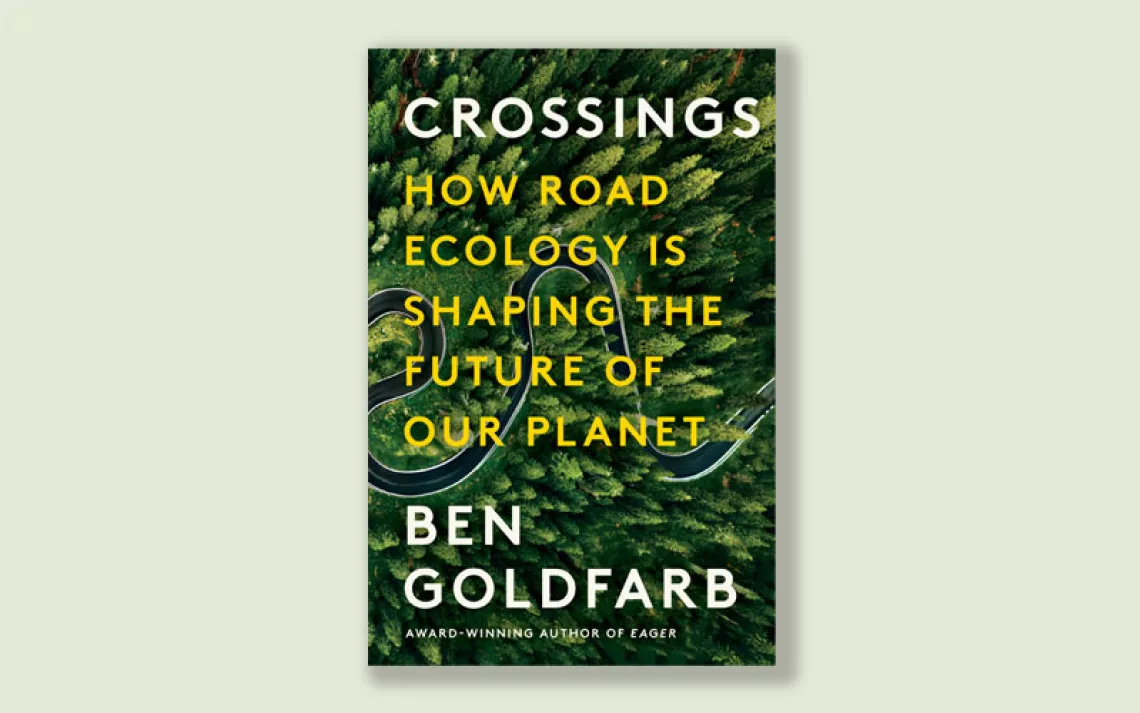All About Our Golden State
You don't know the half of it. But you could look it up!
 If you're at least moderately interested in the outdoors, you likely have a shelf or two of natural history pocket guides. You know, the sort of volume you can stick in your pack and refer to when you're out on the trail, for finding out what's named what.
If you're at least moderately interested in the outdoors, you likely have a shelf or two of natural history pocket guides. You know, the sort of volume you can stick in your pack and refer to when you're out on the trail, for finding out what's named what.
Allan A. Schoenherr's Natural History of California, Second Edition (UC Press, 2017) is not such a book. This hefty new edition of the 1992 classic takes a broad view of the Golden State, but it isn't something you're likely to carry around in the field. It aims for a comprehensive portrait of California's natural history: the lives of trees up and down the slopes of the Sierra Nevada, the complex social lives of acorn woodpeckers, the once-controversial effort to reintroduce condors, the story of fish in the mountains, and much, much more. Updated in the new edition are species names and taxa, details about park classifications, and new stories about modern human and animal interactions.
By accident of political geography, California includes a plethora of natural regions divided by topography, climate, and soil. Schoenherr starts out by detailing the varied efforts to catalog and categorize these areas and ends up going with categorizing regions by their underlying geology: the Sierra Nevada, the Pacific Northwest, the coast ranges, Southern California's cismontane and deserts, the Central Valley, and inland waters and estuaries.
You quickly realize that it is unlikely that you will read this book cover to cover. It's more likely that you'll dive in when you want to know more about something. Its index is mostly a species list—a nice way to find your way into a habitat. Stories about individual species and how they fit into the landscape and with each other make up the bulk of the book.
The chapters on ecology and geology are foundational (literally in the case of geology!) to understanding why these habitats exist and how the variations in California flora and fauna came to be. The state’s richness in endemic (a word you will get to know well, along with "extirpated") species is largely about how those regions are separated from each other, and what imperils those species in our present day is the continued fragmentation of habitat. California has the most endemic species in the United States, and, partly because of that, also the most endangered species.
Schoenherr's prose is more textbook than jaunty adventure out in the field; he doesn't shy away from scientific terms and will often let the context explain them. His wit and character do leak through from time to time, if less often than one might like:
People hard up for firewood will cut down green quaking aspens. These are the same people who complain that quaking aspen wood burns with a foul odor. It serves them right.
The descriptions in Natural History of California are largely ahistoric; it's primarily a guide to the way things are now in California’s natural regions, although Native American use of the landscape and its flora and fauna is frequently mentioned. There's plenty of discussion of the impact of modern development and efforts to manage land and wildlife, and the threats of climate change are laid out in a short epilogue.
All told, if you are an explorer or even a would-be explorer of California’s multivariate landscapes, you should find space for Natural History of California on your reference shelf. Good companion volumes might include The California Naturalist Handbook—a 10,000-foot view of the state (and textbook for those in the California Naturalist program)—and Laura Cunningham's A State of Change: Forgotten Landscapes of California, a book of historical natural history, bringing pre-European California back to life. And of course the 100+ books in the California Natural History Guides series, focusing on the more specific aspects of California life (and rocks and soil). Perhaps, to paraphrase Jaws, you're gonna need a bigger bookshelf.
 The Magazine of The Sierra Club
The Magazine of The Sierra Club







